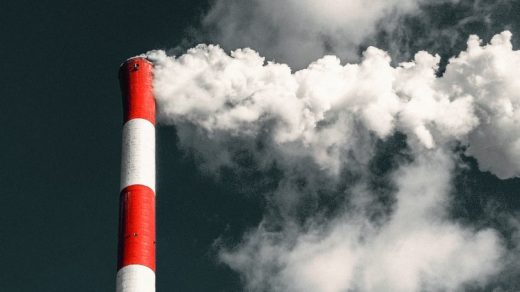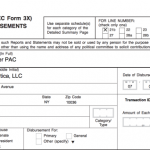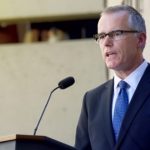Trump Can’t Stop U.S. Emissions From Dropping But They’re Still Not Dropping Fast Enough
When Trump signed his recent “energy independence” executive order, he claimed it would fulfill his campaign promises to bring back coal jobs and end environmental regulations that he falsely claims stunt economic growth. The centerpiece of the order is an attempt to stop the implementation of the Clean Power Plan, a major Obama-era policy to cut emissions from power plants that became tied up in the courts before it took effect. But even if Trump prevents the Clean Power Plan from ever becoming law, it may not be much help to the coal miners who posed with him as he signed the order, because the collapse of coal means that emissions from electricity production may actually drop as much as Obama planned–regardless of what Trump does. The problem is that the Clean Power Plan’s goals were never very ambitious in the first place. They needed to be just a starting point, not the best possible option.
The plan aimed to cut carbon dioxide emissions from electricity production to 32% below 2005 levels by 2030. It would have required states to make plans to cut emissions through means of their own choosing, such as increasing efficiency or replacing coal with natural gas or solar power. It hasn’t taken effect yet–after the rule was finalized in 2015, it landed in court, challenged by multiple states, including the now-head of the EPA, Scott Pruitt, when he was attorney general in Oklahoma. While a circuit court deliberates, the Supreme Court has ordered the EPA to halt enforcement. Now, it may never take effect: The executive order asks the EPA to review the plan and potentially suspend, revise, or rescind it. But the drop in emissions it was designed to create is already well underway. By 2015, emissions had dropped 21%, roughly two-thirds of the way to the goal.
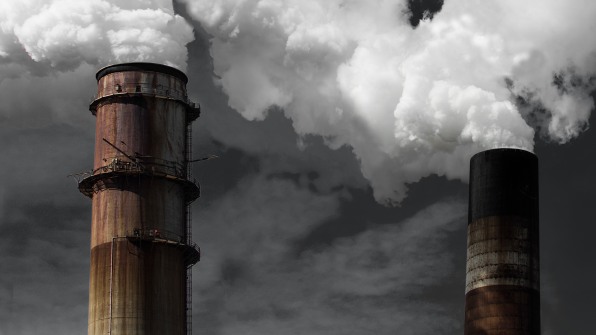
But that success doesn’t mean that we’re on track to meet actual climate targets. The plan’s goal was less ambitious than it could have been, and the bigger problem is that the Trump administration isn’t pushing climate action forward at a time when it’s most needed. But the specific goal of the Clean Power Plan may be achievable despite the current administration’s lack of interest.
One researcher estimates that in 2016, the U.S. may have achieved a 25% reduction. “Getting to 32%, from that perspective, isn’t so ambitious,” says Dan Cohan, an associate professor of civil and environmental engineering at Rice University. “In fact, we would have to slow down progress to get there [that late].”
The drop in emissions has been largely unrelated to regulation. Fracking–the drilling technique with other questionable environmental impacts–launched a natural gas production boom a decade ago and made gas so cheap that many power plants started using it instead of coal. Renewable power has also dramatically dropped in cost. And improvements in efficiency have helped reduce demand for electricity generation in general.
“It started with the shale boom in 2007,” says Jeffrey Peters, a postdoctoral fellow in studying complex systems at Stanford University. “At that point, coal probably produced about twice as much electricity as natural gas in the U.S. . . . by 2016, gas overtook coal power in total generation. Gas only produces about half as much CO2 as coal power. So you also saw a significant drop in emissions from power.”

In a 2016 study, Peters estimated that under a “business as usual” scenario, without the Clean Power Plan, carbon dioxide emissions would drop 26% by 2030. That didn’t take into account aggressive state policies, which could easily push reductions past the original goal of 32%. California has already cut emissions below what the plan would have required by 2030, for example. Those emissions may drop further. California plans to source 50% of its power from renewables by 2030.
“State policies will be the big driver of innovation for the next four years,” says Cohan. “And what states do to cut their emissions is going to be absolutely crucial.” States have also proved the feasibility of the plan’s targets; even Texas has already met its 2030 targets, because of the market forces and federal incentives that led to a shift to natural gas and renewables such as wind power. “The idea that this standard is unattainable is just false,” he says.
In California, as cities have stopped using coal power and emissions have dropped, the economy has grown. “This gives lie to the idea that that we’re going to save money by going to coal,” says Jonathan Parfrey, executive director of the Los Angeles-based nonprofit Climate Resolve, who previously worked in the city government helping L.A. divest from coal. “That’s simply not the case. What is happening is that what Trump is doing is actually taking us backward. The United States will become less competitive in the global market, in developing new technologies for energy, and we’re going to cede the marketplace to other nations.”
Though Trump billed the executive order as a way to help bring back jobs for coal miners, that’s not likely to happen, nor is it likely to significantly increase coal-fired power production on its own. Even Robert Murray, head of the coal company Murray Energy, told the Guardian that Trump’s actions can’t bring jobs back. (Solar power, on the other hand, already provides twice as many jobs as coal).
“I think California is going to be in a position to have a strong economy going forward,” says Parfrey. “Frankly, I fear for the rest of the nation. I fear that the places that are highly dependent on fossil fuel will simply get left behind. Because right now, there are contracts coming in on photovoltaics that are far less expensive than either natural gas or coal. Why are we attaching ourselves to an energy source whose time has come and gone, rather than investing in energy for the future?”
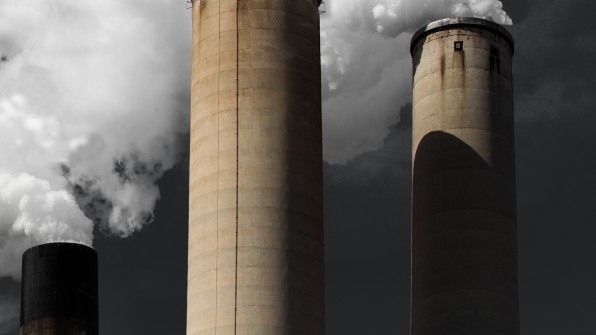
Along with the attack on the Clean Power Plan, the executive order also asks the EPA to revisit emission limits for new fossil fuel power plants, and directs the Interior Department secretary to lift a moratorium on coal leases on federal land. It also revisits methane emissions limits, and tells agencies they no longer have to consider greenhouse gas emissions in environmental assessments of new construction, among other changes.
For the coal industry, desperate to make whatever profits it still can, these changes in policy could make production a little easier. Still, because of economics, new coal plants are unlikely to be built now. In a recent survey of hundreds of utilities across the U.S., the majority said that they expected to source more power from renewables and natural gas over the next decade, and expected to get less from coal. Duke Energy, which used a significant amount of coal in the past, plans to invest $11 billion in natural gas and renewable power, aiming to cut emissions 35% by 2026 from 2005 levels.
The use of coal power is only likely to rise if natural gas becomes more expensive, and existing coal plants that are underused ramp up production. While that’s possible–and the Clean Power Plan would have protected against an increase in coal power in that scenario–it’s unlikely to happen if current trends in pricing continue. The Trump administration isn’t trying to impede the growth of natural gas.
All of this means that the Clean Power Plan targets may still be on track–but that doesn’t mean that climate problems are solved. The plan only targeted electricity’s carbon dioxide emissions, not other greenhouse gas emissions, and its targets were modest.
“Natural gas is still a fossil fuel,” says Rachel Cleetus, lead economist and climate policy manager for the Union of Concerned Scientists. “At the power plant it burns cleaner than coal, but it still has emissions. It also has methane emissions with the production and distribution chain. Study after study has shown that it’s not going to be enough to switch from coal to gas in terms of reaching our longer-term climate goals. We do need policies that are really going to double down on the deployment of truly low-carbon resources like renewable energy, rather than just a coal to gas switch.”
Some of the other rules that the executive order attempts to roll back–such as regulations on methane emissions–would have helped make even more progress.
Cleetus suggests that the Clean Power Plan could have been amended over time to make the targets more ambitious as technology continues to improve. But it’s also possible that the current fight will lead to new policy from a future administration that’s even more stringent.
“The Clean Power Plan was written at a time when natural gas was much more expensive, when wind and solar were much more expensive, and so it seemed ambitious to try to get 32% cut by 2030,” says Cohan. “Now we’re way faster paced than that already. It doesn’t seem so ambitious anymore.”
It might, for example, lead to a carbon tax during the next administration. “The carbon tax proposed by the elder GOP statesmen would have raised the price of coal power by about four cents a kilowatt-hour–would have completely priced it out of the market,” he says.
The Clean Power Plan itself won’t immediately go away. The EPA is required to regulate emissions under the Clean Air Act. After a review of the current rule–which could take months–if the EPA decides that the rule should be changed, it will have to create a new proposal through a lengthy rule-making process and fight off lawsuits. The administration has asked the Court of Appeals to delay ruling on the case over the current rule (and even if they did reach a decision, the case would likely go to the Supreme Court, further delaying a change).
One lawsuit will challenge the administration’s idea that the rule–which is finalized–can be held in limbo while the new rule goes through the legal process. “We are going to oppose this very vigorously,” says David Doniger, director and senior attorney for NRDC’s climate and clean air program. “That is a fight that will take place in the next several weeks.”

If the courts let the administration proceed, NRDC and others can sue again once the new rule is created, likely after years of work on the part of the administration.
“It’s a rule of basic law that an administrative agency can’t just announce a new policy, nor can a president,” says Doniger. “They have to propose regulation, and take public comment on that, and they have to have a strong legal basis and factual basis. Then after the public comment, you have to issue a final decision with an even stronger rationale for why you’re doing what you are. Then, anyone who’s upset with this gets to bring another lawsuit. In other words, the same difficult, multi-step process it took to build this building up, the Trump administration has to use the same process to tear the building down. If they break the law in doing it, then we can stop them.”
In the meantime, the economics of coal may help keep carbon dioxide emissions from electricity on a downward trajectory–though without the guarantee of the Clean Power Plan, and without the more aggressive action that researchers say is necessary.
“We’re losing time here,” says Cleetus. “And it’s time–from a climate science perspective–that we really don’t have.”
(47)

